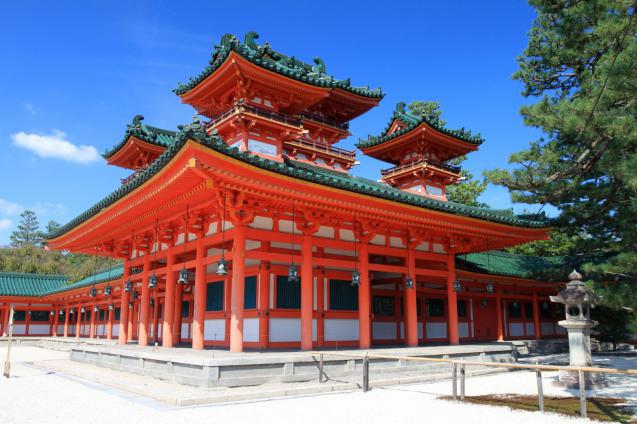
Heian Shrine is one of the heritage sites that has witnessed short history of Japan. The shrine was built to honor the spirits of the last emperors reigned in Kyoto, Emperor Kammu and Emperor Komei, before the capital was moved to Tokyo.
The foundation of the Shrine was also for the celebration of the 1100th anniversary of the capital transfer from Nara to Heian-kyo, the old name of Kyoto, where the Shrine was also named after.
Things to see
Upon entering the Shrine, a vermillion colossal torii (shrine gates) will welcome you. It's a special torii, because it is the biggest in Japan. It measures 24.2 meters high, and the top rail stretches 33.9 meters.
Aside from the Shrine's main hall, there are also other buildings, which are actually smaller replicas of the old Kyoto Imperial Palace, namely: East and West Honden (the main halls), and the Daigoku-den (Great Hall of State).
There are also gardens in the 30,000 square meter round-the-pond landscape that complement the changing seasons of Japan. It has blooming weeping cherry trees in spring, the blossoming water lilies and irises in summer, and the famous fall colors of Japan.
From Kyoto Station, take a bus ride via Kyoto City bus number 5. Alight to Kyoto Kaikan Bijutsukan Stop. It's a two-minute walk from there to the shrine.
The Shrine is open daily and admission fee is 600 Yen.
Submit Itinerary
Signup
- Sign Up
- Already a member? Login Now!
